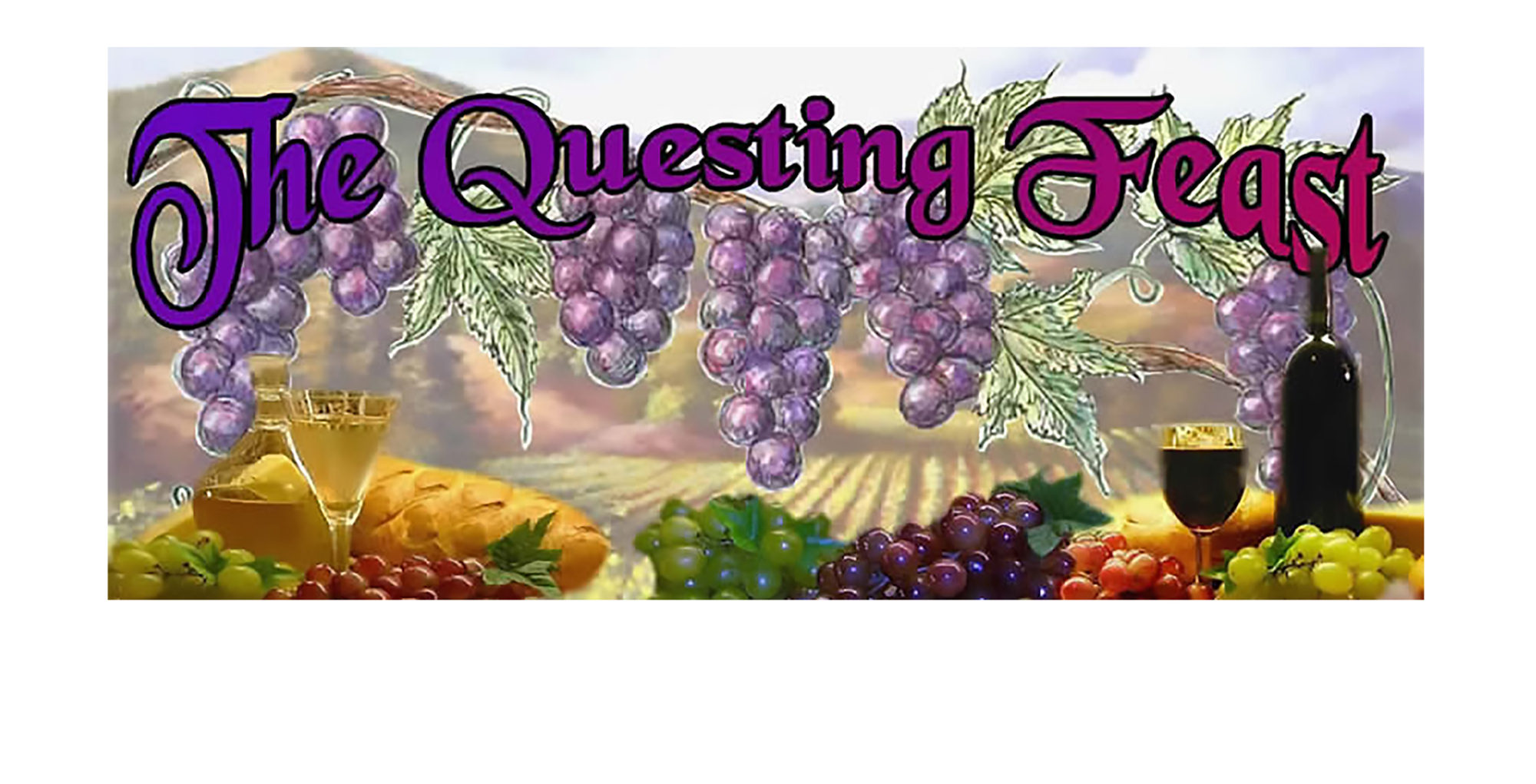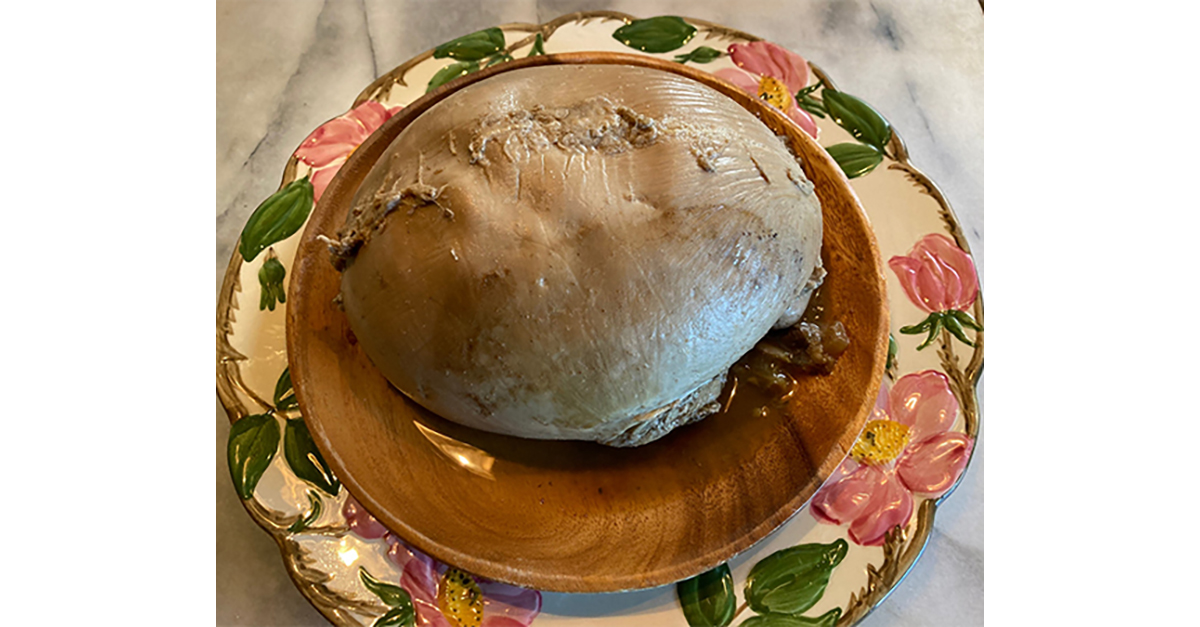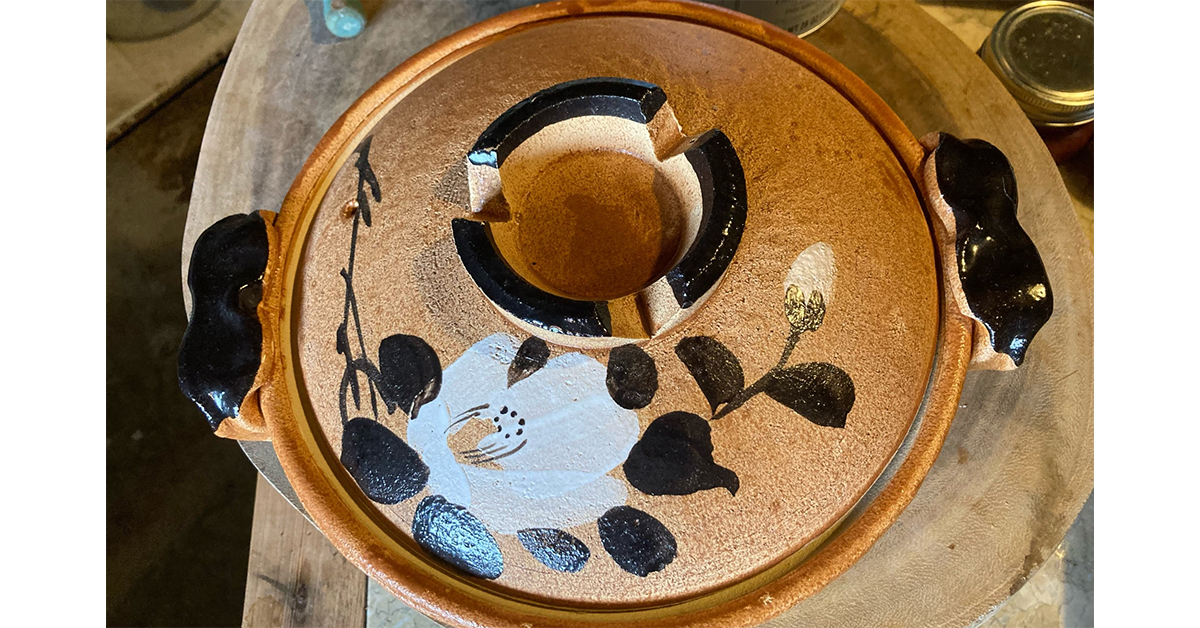by Geraldine Duncann ©2009
Robert Burns , much-loved national poet of Scotland, was born on January 25th 1759. Not only in Scotland, but the world around, wherever people of Scottish decent or would-be-Scots gather, they celebrate “Burns Night.” The celebration usually involves a haggis and an inordinate amount of unblended malt whisky. Who’s Robert Burns? You most likely croon his most famous work every New Year’s Eve, for he was the author of Auld Lang Syne.
Whereas I am sure you would have no objection to hefting a glass of Glenfiddich or Glenmornagie, most of you probably wouldn’t touch a haggis with a ten foot Claymore, which is too bad because haggis has received a lot of undeserved bad press over the years. If you are interested in celebrating the Scottish Bards birthday, along with the haggis, you couldn’t do better than to serve Cock-a-Leekie soup.
Haggis has over the centuries been badly abused and sometimes deservedly, sometimes undeservedly, developed a rather bad reputation. It has received a lot of bad P.R. and has been the brunt of many a rude joke. In actuality a haggis is rather like a cross between meatloaf and pâté.. And you can make it with most anything you like. Traditionally it is made up in all or part with variety meats, that is liver, tongue, kidneys, heart etc. but it doesn’t have to be. A good haggis should contain at least some variety meats. And the filler? Oatmeal of course. We are talking about Scotland after all.
Part of the reason for a haggis’s bad rep is the fact that it is traditionally cooked inside a sheep’s stomach. Many people find this off putting, yet the eat sausages which are traditionally cooked in a sheep or pigs intestine.
Now, knowing that many Americans think they have been poisoned it they eat liver or any other organ meat, the first recipe listed below contains only a bit of liver. I’m not including any of the other organ meats because in modern large-chain markets they can be difficult to find. If you live near smaller markets that cater to farming communities, people who put up their own food, or ethnic groups who have held on to their traditional foods, you should be able to find them.
Almost Traditional Haggis
Serves about 20
First, since you will most likely not be able to find a sheep’s stomach to cook your haggis in, I suggest you buy a couple of large pieces of tripe and sew them into a pouch with cotton kitchen twine.
- Olive oil or drippings
- 2 to 3 large yellow onions, chopped small
- 6 to 8 cloves of garlic, minced
- 2 to 3 stalks of celery, chopped small
- About ½ pound of beef, sheep or pig liver
- 2 ½ pounds of ground beef or lamb
- 1 pound of ground sausage meat
- 3 cups of quick oats
- 1 tablespoon mixed dried herbs, (Italian seasoning) or favorite herbs
- ¼ cup of sugar
- Salt and fresh ground black pepper to taste – (heavy on the pepper)
Heat drippings or olive oil in a large heavy skillet. Traditionally drippings would be used, but I much prefer olive oil for health reasons. Gently sauté the onions, garlic and celery until the onions are pinkish, soft and translucent but not yet browned. Unless you have a very large skillet you may need to do this in batches.
When the vegetables are done, allow them to cool. Meanwhile, grind or chop the liver very small. Mix all ingredients together well. Fry or nuke a small amount to test for seasoning.
Using cotton kitchen twine, sew the tripe into a pouch. Stuff the pouch with the meat mixture. Do not over fill it or it may burst in the cooking. Just like when cooking sausages, the tripe will shrink some during cooking. After the pouch is stuffed, sew it shut. Now, using a skewer, poke some holes in the tripe. This will help to keep it from bursting as it cooks.
Now, using more of the cotton kitchen twine, tie several loose fitting loops around the haggis. This is so that you may lift it out of the pot while it is still hot.
Using a pot large enough to hold your haggis, cover the bottom with a layer of sliced onions, and place the haggis on them. This will keep the haggis from scorching. Fill the pot with enough cold water to cover the haggis and put on the stove on a high flame. Bring to a boil, then reduce the heat to maintain a simmer, cover with a lid and cook for 2 ½ to 3 hours.
When the haggis is done, carefully lift it out of the pot and sit in a large colander or some place else where it may drain. Taste the liquid it was cooked in. You may wish to use it to make a nice Mushroom Pan Gravy which is traditional to serve with the haggis, as is a good Sweet and Hot Brown Mustard.
To serve, place the warm haggis on a large serving plate or tray. Surround with decorative greens like kale, or parsley. You may wish to scatter chips, (French fries) around it as well. Serve hot with the gravy and mustard. In some regions of Scotland, haggis is served with mashed potatoes and mashed turnips instead of chips.

More Traditional Haggis
by Leilehua Yuen, extracted from Pōhaku Makamae, a Holmesian pastiche in which a hapa girl, Kamaka Holmes, strives to emulate her distant cousin, the renowned Sherlock Holmes. The book makes a lovely holiday gift, as it contains about 30 Victorian holiday recipes which will combine to create a banquet for Christmas, Hogmanay, Burns Night, or any other celebration.
The speaker in this extract is Fevronia Watkins, the younger cousin of Kamaka, who plays the role of Watson, documenting Kamaka’s investigations.
Haggis is really a kind of pâté made from sheep’s pluck and oatmeal, and cased in the rumen. It is a rich dish, as the oatmeal absorbs and swells with the fat which disperses the flavor throughout. Some of the plantation managers, being Scots themselves, celebrate Burns night and so my Uncle and Kamaka were able to indulge at those events, but Kamaka’s mother, being Hawaiian, had never prepared the dish, and my Uncle, being unfamiliar with the workings of a kitchen, could not do so for himself.
It is the same recipe for a sheep or a lamb. I asked the butcher for lamb because I am not large, and would be making it myself. As every sheep and lamb is of different size, you must judge the quantities for yourself, once you have the pluck.
- Sheep’s pluck (heart, lungs, and liver)
- round onions
- 2 cups coarse oatmeal
- 2 cups lamb suet (if mutton suet cannot be gotten, well-refined beef suet will do)
- salt
- coarsely ground white pepper
Finely ground:
- sage
- thyme
- rosemary
- savory
- rumen (4th stomach of the sheep)
The day before you wish to bake the haggis, wash the pluck and simmer it gently in plain unsalted water at least an hour, or until it is tender. Let it cool overnight in the cooking liquid.
Chop the heart and lungs very fine, to about the texture of the oatmeal. Grate the liver so that it crumbles to about the same texture.
Toast the oatmeal in a skillet or the oven for a few minutes until lightly browned.
Chop the onions very fine. Add the seasonings as you see fit. If unsure, start with a quarter teaspoon of each and adjust to taste.
Mince the suet.
Blend together all of the ingredients, adding in the broth from cooking a little at a time. It should be moist, but not hold together.
Test the flavor by cooking a spoonful and trying it. Adjust seasonings to taste.
Spoon the mix into the rumen until it is half full. The haggis should not be packed too tightly, as the rumen will shrink, and the mix will expand as it cooks. Massage the rumen to remove any air pockets. The air bubbles must be removed to prevent the haggis exploding.
With the kitchen string, tie off the openings. I like to leave the ends of the string long and tie them to a spoon laid across the pot, then it is easier to draw it out of the broth once cooked.
Set the haggis back into the pot of broth in which the pluck was cooked and bring it to a simmer. Watch it for trapped air bubbles which may create bulges in the casing as it contracts and the stuffing swells. Use a sharp skewer to pierce and release them. Cook for about a half hour per inch of thickness. When it is fully cooked, lift it out onto a plate and pat it dry with cloth. Lay it on a bed of mashed roots and decorate with whatever is appropriate to the occasion.



